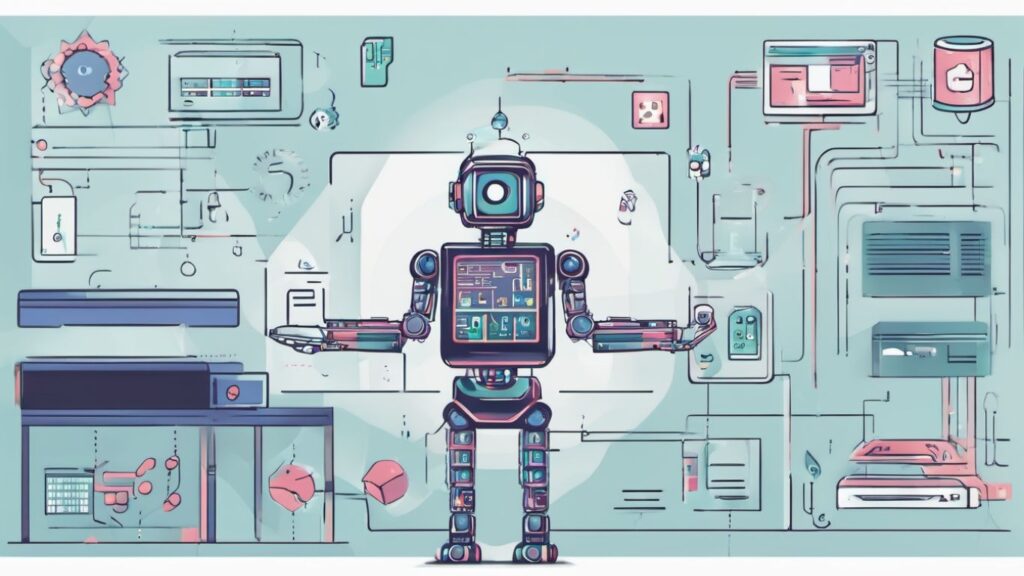As artificial intelligence (AI) continues to evolve and integrate into various industries, its use in academic research has become increasingly common. However, with this integration comes the challenge of maintaining academic integrity and ensuring that AI-generated content is appropriately cited and attributed. This article explores whether SafeAssign, a popular plagiarism detection tool, can detect AI-generated content, particularly in research papers.
Overview of SafeAssign Technology

SafeAssign is a web-based plagiarism detection service used by educational institutions to identify unoriginal content in student papers. Developed by Blackboard Inc., SafeAssign compares submitted papers against a comprehensive database of academic publications, web pages, and other student papers to identify potential instances of plagiarism. The tool generates an originality report, highlighting matched text and providing an overall originality score.
How AI Works in Research
AI tools, such as machine learning algorithms and natural language processing models, are increasingly used in academic research for data analysis, content generation, and text summarization. These tools can process large datasets, identify patterns, and generate insights that would be time-consuming for humans to achieve manually. However, the output from AI tools must be appropriately cited to maintain transparency and credibility in research.
Challenges in Detecting AI by SafeAssign
While SafeAssign is effective in detecting copied content from existing sources, it faces challenges in identifying AI-generated content. Here are a few reasons why:
- The novelty of AI Output: AI-generated content is often unique and not directly copied from existing sources, making it difficult for SafeAssign to identify matches in its database.
- Lack of Source Material: If the AI tool generates entirely new text or data analysis results, there may be no existing source material against which to compare in SafeAssign’s database.
- Paraphrasing and Rewriting: AI tools can effectively paraphrase or rewrite content, which may evade detection by traditional plagiarism checkers that rely on direct text matching.
Strategies for Evading Detection

While it is possible to evade detection by SafeAssign through AI tools, it is essential to note that doing so undermines academic integrity and can have serious consequences. Here are some unethical strategies that individuals might use:
- Heavily Paraphrasing: Using AI tools to significantly paraphrase existing content, making it less likely to be detected.
- Generating New Content: Employing AI to create entirely new text, bypassing the need for citation.
- Mixing AI Output with Original Writing: Blending AI-generated content with original writing to lower the overall similarity score.
Ethical Implications of Bypassing Plagiarism Detection
Bypassing plagiarism detection tools like SafeAssign through AI raises significant ethical concerns. Academic integrity is foundational to the credibility and reliability of research. Misrepresenting AI-generated content as original work undermines the trust in scholarly communications and diminishes the value of genuine research efforts. Researchers must attribute AI-generated content and maintain transparency in their methodology correctly.
Future Considerations for Improving Detection Methods
To address the challenges posed by AI-generated content, the following improvements could be considered for plagiarism detection tools like SafeAssign:
- Enhanced AI Detection Algorithms: Developing advanced algorithms to identify AI-generated text patterns and structures.
- Integration with AI Tools: Collaborating with AI tool developers to create mechanisms that tag AI-generated content for easier identification.
- We are expanding databases, including AI-generated content databases for comparison, to improve the chances of detecting unoriginal AI-generated content.
- User Education: Promoting awareness and education about the ethical use of AI in research, emphasizing proper citation practices.
FAQs
- Can SafeAssign currently detect AI-generated content?
SafeAssign primarily compares submitted documents against existing sources in its database to identify matches. Because AI-generated content is often unique and may not match existing sources, SafeAssign needs help reliably detecting AI-generated text.

- What are the ethical concerns with using AI to generate research content?
Using AI without proper citation raises issues of academic dishonesty and integrity. Misrepresenting AI-generated content as original work compromises the credibility of research and undermines the trust within the educational community. To maintain ethical standards, it is essential to attribute AI contributions transparently.
- How can researchers appropriately attribute AI-generated content?
Researchers should clearly state in their methodology sections if AI tools were used for data analysis, content generation, or text summarization tasks. Proper citations should be included to reference the specific AI tool or algorithm employed, ensuring transparency and academic integrity.
- Are there consequences for evading plagiarism detection with AI tools?
Yes, evading plagiarism detection using AI tools can result in severe academic penalties, including failing grades, suspension, or expulsion. The consequences extend to tarnishing one’s reputation and diminishing the legitimacy of one’s academic credentials.
- What steps are being taken to improve the detection of AI-generated content?
Research and development into advanced algorithms that can identify AI-generated text patterns and collaborations with AI tool developers to tag AI-generated content are ongoing. Enhancing user education about the ethical use of AI in research is also a crucial step in addressing this challenge.
- Can mixing AI-generated content with original writing help avoid detection?
While blending AI-generated content with original writing might lower similarity scores and evade detection tools like SafeAssign, it is still considered unethical. All human or AI-generated contributions should be transparently acknowledged to uphold academic integrity.
Conclusion
SafeAssign plays a vital role in detecting plagiarism and maintaining academic integrity. While it currently faces challenges in detecting AI-generated content, ongoing advancements in AI detection algorithms and cooperative efforts with AI tool developers can enhance its effectiveness. Researchers must prioritize transparency and ethical practices by properly citing AI-generated content. By doing so, we can ensure that academic integrity is upheld in the evolving landscape of AI-driven research.
Ready to integrate AI ethically in your research? Ensure your work maintains academic integrity and explore the capabilities of SafeAssign to keep your research credible and trustworthy.











